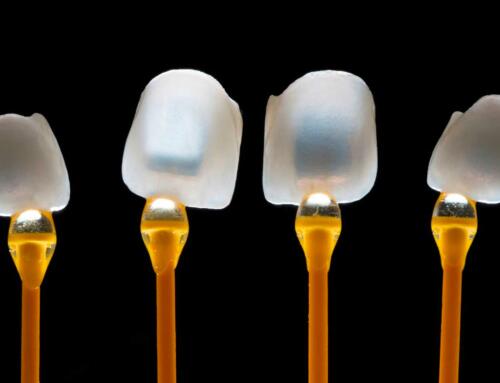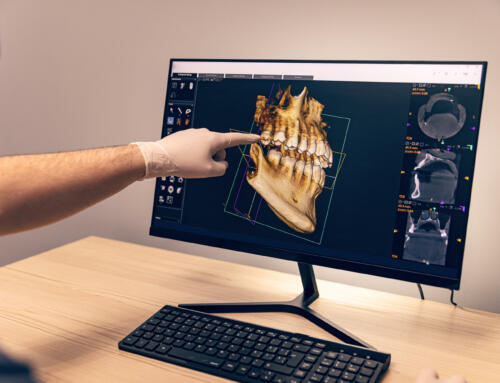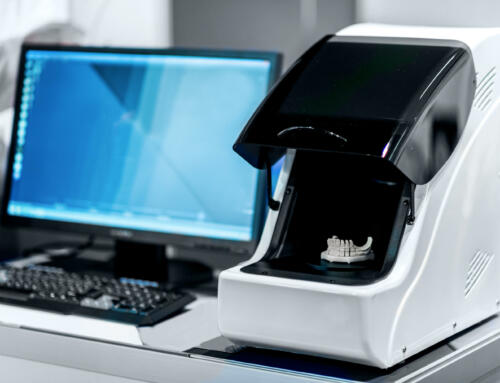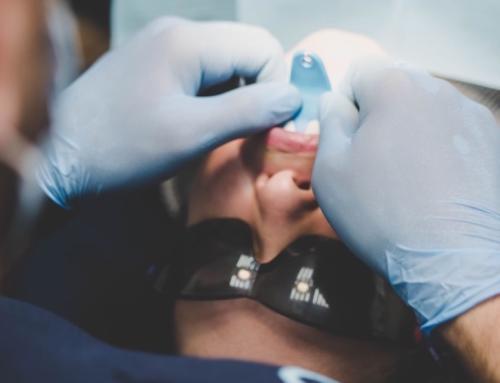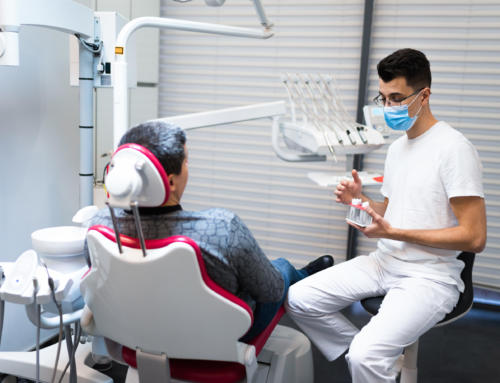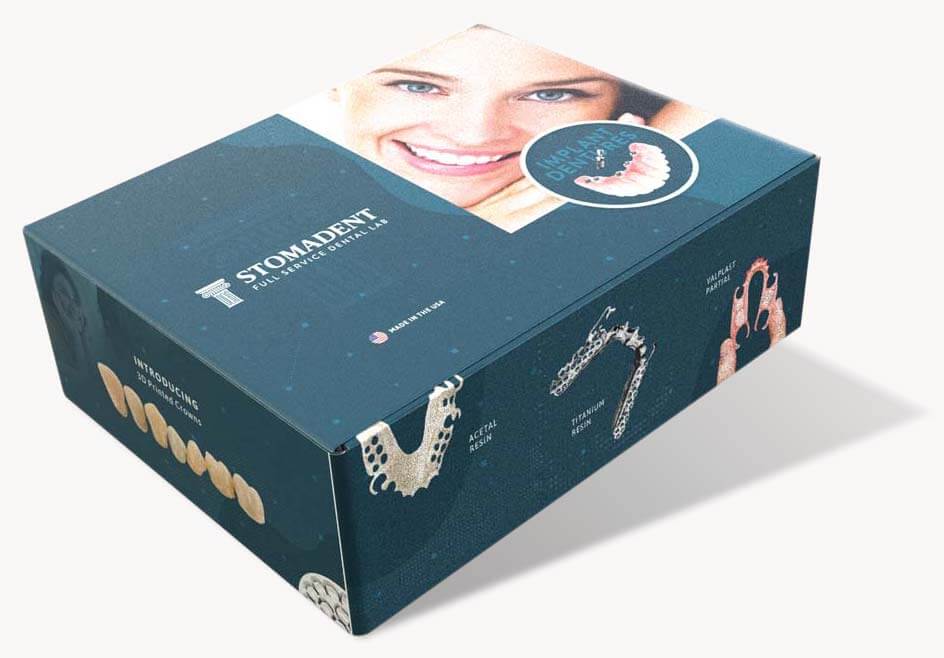
By David Hudnall, DMD
One of the most frustrating things for a patient who wears a snap on denture is the inability to remove it when necessary. Talk about a visible sense of anxiety and panic evident on their face.
Since this is a universal concern for many snap on denture wearers, let’s get into methods to remove and insert snap on dentures as well as ancillary reasons why snap on dentures might not be seating properly.
How to Remove Snap On Dentures
Snap on dentures must be removed for daily cleaning. Sometimes, the denture can be so retentive that removing the denture is frustrating, and the patient gives up, risking their overall health and the health of the dental implants that support the denture. So, how to remove snap on dentures?
Typically, patients are able to position their thumb under the border of the denture in the canine area and push upward to break the seal with one of the implants, causing the denture to be released from all implant abutments. An alternative method is to grab both sides of the denture flange near the back corner on one side of the denture and pull up and forward to release the denture.
Patients with dexterity issues or caregivers can benefit from a denture removal tool manufactured by Zest, a leading dental implant manufacturer. This rigid tool has an angled hook-shaped end that allows the patient to get under the flange and push in order to release the denture. These tools are available through dental professionals.
Solving Snap On Issues
While snap on dentures provide exceptional service and denture stability, it is possible to have occasional problems seating them fully and correctly.
Misaligned Insertion Path
Proper seating and using a reliable method to remove snap on dentures are critical for the dentures to function correctly. Every denture has a path of insertion and removal that must be followed in order for the denture to snap or unsnap without exerting excessive force on the denture itself. It is important for the patient to practice lining up the denture and snapping it into place with finger pressure, especially in the early stages of receiving snap on dentures. Avoid the temptation to bite the denture into place, as a misaligned denture can be easily broken with biting forces.
Housing Inserts Are Worn
Over time, the rubber rings or nylon inserts become worn or creased, preventing complete insertion of the denture. Inspect housing inserts for signs of wear or damage. Inserts must be replaced on conventional dentures on average once per year. See your dentist to have the inserts replaced.
Debris on Implants or in Housings
Food debris on the attachment surface of dental implants or inside of the housing will interfere with denture insertion or removal. Rinse and remove debris before attempting to seat the denture.
Plaque
Snap on dentures can be reservoirs for plaque and calculus. It’s critical to brush and clean the dentures and implant housings as frequently as natural teeth – at least twice a day.
Gum Soreness
Typically, patients experience discomfort during the initial adjustment period after receiving snap on dentures. However, when patients encounter red, swollen, or painful gums, they should carefully remove their snap in dentures, to avoid further irritation and contact their dentist. There may be underlying issues contributing to gum soreness.
When to Remove Snap On Dentures
Contrary to popular belief, any removable dental appliance, including snap on dentures should never be worn 24/7 without regular removal for cleaning and in-home maintenance. Aside from regular home care, certain issues can develop requiring the removal of your snap on dentures.
Denture Cracks
Although snap-on dentures are manufactured from high-quality materials, their design is more delicate than that of comparable traditional removable full dentures. This means that snap on dentures are more prone to developing cracks or breaking where the implant is located. If the snap on denture cracks or breaks, it usually happens at the site of one of the implant housings. Contact your dentist or denturist to have it repaired.
Gum Wear
If your snap on denture doesn’t fit the contour of your gums correctly, the denture regularly causes sores to develop, or an excess amount of food and debris gets under the denture, it may be necessary to have the denture relined. A reline will fill the gaps that have developed between the denture base and gum tissue, making it more secure and less likely to rub.
Implant Issues
If the gum is sore around one of the dental implants, remove the denture and check to see if you can move the implant slightly with your fingers. If you can, the implant may be failing. It is best to leave the denture removed from your mouth until you can see your implant surgeon. A snap on denture may not snap into place correctly with a loose implant present, making the denture more prone to movement or fracture. Rather than creating an additional problem for yourself, wait until you see the dentist before attempting to reinsert your denture.
Snap On Dentures: A Guide for Patient Care
Establish a regular cleaning routine that includes removing your snap on dentures, brushing the denture to remove plaque and debris, cleaning the inside of the denture housings, and cleaning and brushing the gum tissue around the dental implants. Ideally depending on your settings, the denture should be removed while sleeping since salivary flow slows down and bacteria tends to proliferate on your dentures. Dentures should be stored submerged in cool water in a sealed container when not being worn.
The Transition to New Dentures
While dentures that are secured by dental implants are a great way to avoid the pitfalls and difficulties associated with wearing traditional dentures, it takes time to get used to implant-retained dentures. Here are some other important considerations:
Address Patient Compliance
There is a reason that snap on dentures are removable – so they can be cleaned and maintained by the patient at home. Much like natural teeth, patients who do not care for their dental implants and snap on dentures properly risk losing them. Think of all of the benefits received from snap on dentures. Do you really want to risk your investment and revert to wearing traditional dentures that move around by failing to take care of your snap on dentures and implants? The dentist cannot be responsible for issues that arise associated with the implant supported dentures and lack of everyday home care.
Permanent Dentures
Permanent dentures, such as a zirconia bridge, are held to dental implants with screws that can only be removed for periodic maintenance by a dental professional. While this type of denture does offer certain benefits, the main advantage is never being seen without your teeth; permanent dentures can be more expensive to manufacture, require more frequent and costly maintenance, and be more difficult for the patient to remove plaque and clean under between dental visits.
Without proper daily care, debris and bacterial proliferation on the denture can lead to fungal overgrowth, sore gum tissue, and foul odors that cause bad breath. Poor care can even lead to missing teeth and limited chewing ability.
Partner with a Premier Lab
Implant dentures are a wonderful service to patients but offer certain technical challenges to produce an appliance with an exact fit. Not every dental lab is up to the task. Stomadent Dental Lab is uniquely positioned to provide CAD/CAM-fabricated snap on dentures designed to fit precisely every time, saving time, money, and frustration. Aside from the manufacture of snap on dentures, Stomadent is also able to assist clinicians with denture maintenance procedures, relines, and repairs that will keep your patient’s denture functioning optimally.
Stomadent Dental Lab: The Ideal Partner
Stomadent Dental Lab makes it easy to tap into our automated workflow by incorporating your chairside intraoral scans into our CAD/CAM design and manufacturing process. Whether your patient requires a traditional denture, an implant denture, or fixed partial dentures, Stomadent takes advantage of all of the benefits that milling and 3D printing have to offer, returning to you a precision dental appliance that fits correctly with minimal to no adjustments.
Why not let Stomadent take the burden off of you with dental products that will bring rave reviews from your patients?

![Hybrid Denture with Titanium Bar [Best Methods + Advantages]](https://stomadentlab.com/wp-content/uploads/2024/01/dental-prosthesis-on-dark-background-2023-11-27-05-06-28-utc-scaled-500x383.jpg)
![The Lucitone Denture Advantage [Best Practices + Advice]](https://stomadentlab.com/wp-content/uploads/2022/08/lucitone-promo-1-500x383.jpg)
